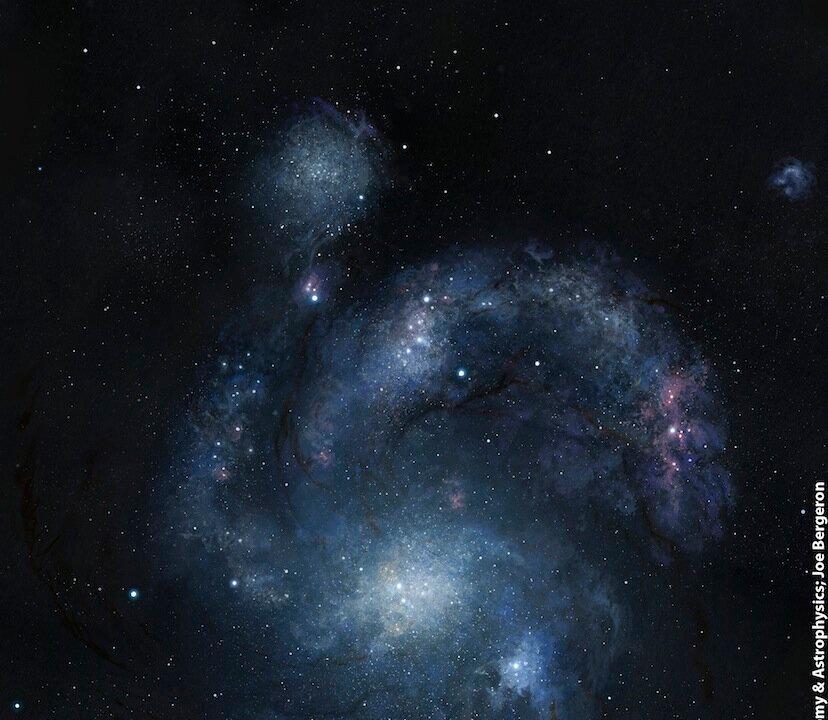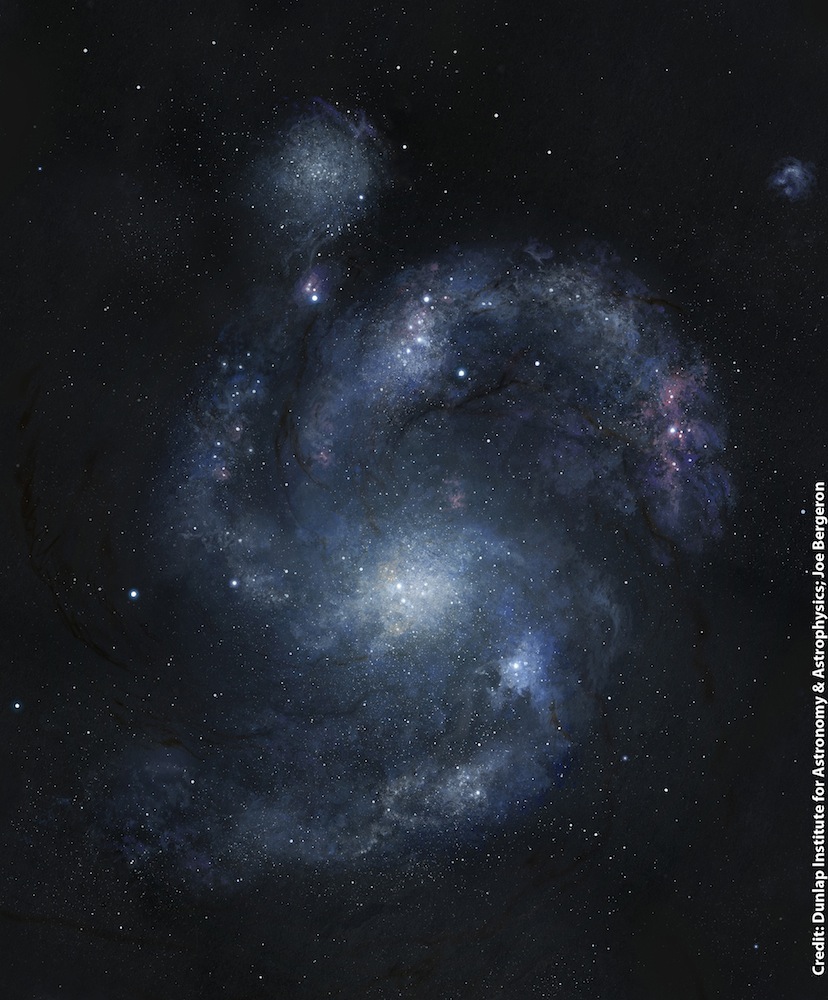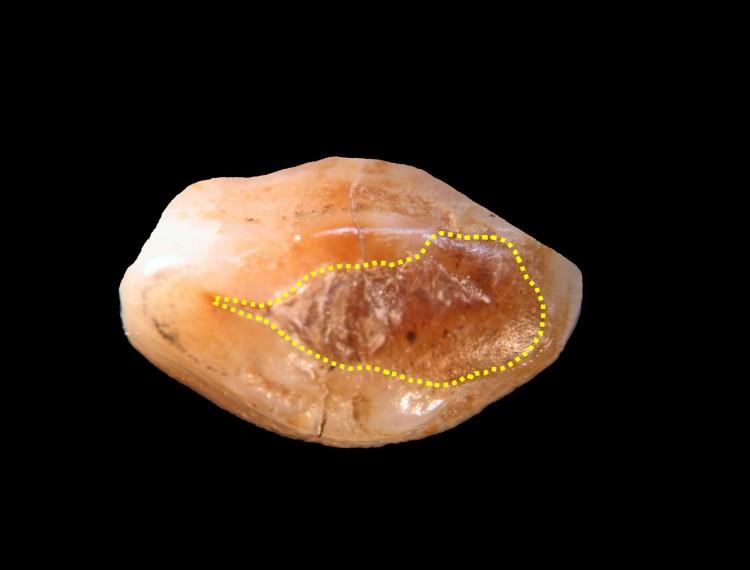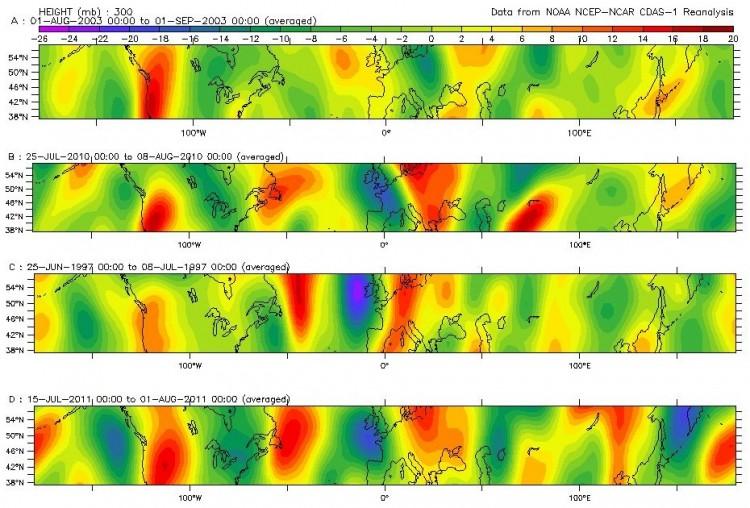A lone spiral galaxy that existed about 3 billion years after the alleged big bang may help explain how spirals form.
Named BX442, this grand design spiral galaxy is about 10.7 billion years old. In contrast, other galaxies from that epoch were clumpy and asymmetric.
BX442 was discovered during a survey with the Hubble Space Telescope (HST), and analyzed with the W. M. Keck Observatory in Hawaii.
“The vast majority of old galaxies look like train wrecks,” said study co-author Alice Shapley at the University of California-Los Angeles in a press release. “Our first thought was, why is this one so different, and so beautiful?”
Using Keck’s OSIRIS instrument (OH-Suppressing Infrared Imaging Spectrograph), the team confirmed that BX442 is a single rotating disk, rather than two unrelated galaxies in the same line of sight.
“We first thought this could just be an illusion and that perhaps we were being led astray by the picture,” Shapley said. “What we found when we took spectra of this galaxy is that the spiral arms do belong to this galaxy; it wasn’t an illusion.”
BX442 seems to be merging with another galaxy, and this may be why it is forming a spiral pattern.
The astronomers created a simulation to test this idea, and found the spiral may disappear in 100 million years.
“BX442 represents a link between early galaxies that are much more turbulent and the rotating spiral galaxies that we see around us,” Shapley concluded.
“Indeed, this galaxy may highlight the importance of merger interactions at any cosmic epoch in creating grand design spiral structure.”
The paper will be published in Nature on July 19.
The Epoch Times publishes in 35 countries and in 19 languages. Subscribe to our e-newsletter.





